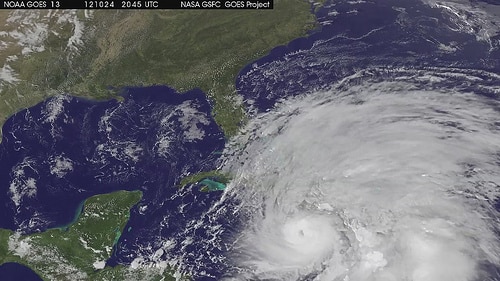Hurricanes are one of the most destructive natural disasters that can strike coastal regions around the world. These powerful storms can cause widespread damage to homes, businesses, and infrastructure, as well as pose a significant risk to human life. As such, it is essential to understand the statistics and patterns associated with hurricanes to prepare for their impact and minimize their effects.
In this blog post, we’ll explore the statistics behind hurricanes, including their frequency, intensity, and patterns of occurrence. We’ll take a look at the historical data on hurricanes and examine how climate change is affecting the frequency and intensity of these storms.
Interesting Facts About Hurricanes
- The North Atlantic Hurricane Season: The North Atlantic Hurricane Season officially begins on June 1st and lasts until November 30th. On average, this season witnesses approximately 12.1 tropical cyclones, each varying in intensity and impact.
- Global Tropical Cyclone Activity: November stands out as the only month when every tropical cyclone basin across the globe remains active. This unique occurrence increases the likelihood of tropical cyclone activity across various regions.
- Naming Hurricanes: The practice of assigning human names to tropical storms originated in 1954. Since then, 80 Atlantic Hurricane names have been retired due to the significant impact and devastation caused by these storms.
- Record-Breaking Tragedies: The Bhola Cyclone, which struck Bangladesh in 1970, holds the unfortunate title of being the deadliest tropical cyclone on record, claiming the lives of 300,000 people. In the North Atlantic, the Great Hurricane of 1780 remains the deadliest hurricane, causing the tragic loss of 22,000 lives in the Lesser Antilles.
- Devastating Impact in the United States: Galveston, Texas, endured the deadliest hurricane in U.S. history in 1900 when the Galveston Hurricane claimed the lives of 8,000 people. Furthermore, Hurricane Miami in 1926 holds the distinction of being the costliest hurricane on record, causing a staggering $164 billion worth of damage (2010 value).
- Record-Breaking Winds: Hurricane Patricia holds the title for the strongest sustained wind speeds ever recorded, with winds reaching a remarkable 216 mph in 2015. These extreme winds exemplify the sheer power and intensity hurricanes can unleash.
- Extraordinary Longevity: Among the ranks of tropical cyclones, Hurricane John stands as the longest-lasting storm on record, persisting for an astonishing 31 days in 1994. This endurance showcases the ability of some hurricanes to maintain their strength over an extended period.
- Water-Related Hazards: Water-related hazards are responsible for the majority of tropical storm and hurricane-related deaths in the United States. Flooding accounts for 27% of these fatalities, while storm surge claims 49%.
Classification of Tropical Cyclones: Tropical cyclones are classified based on their sustained wind speeds:
- Tropical Depression: Winds of 38 mph (33 knots) or less
- Tropical Storm: Winds of 39 to 73 mph (34 to 63 knots)
- Hurricane/Typhoon/Cyclone: Winds of 74 mph (64 knots) or higher
- Major Hurricane: Winds of 111 mph (96 knots) or higher, falling within Category 3, 4, or 5 on the Saffir-Simpson Hurricane Wind Scale.
The incredible power and impact of hurricanes make them a subject of fascination and study. These intriguing facts have shed light on various aspects of hurricanes, from their seasonal patterns to their historical significance. As we navigate the ever-changing dynamics of our planet’s climate, understanding the nature and behavior of hurricanes becomes increasingly important in mitigating their impact and protecting vulnerable communities.

Photo by Alexey Demidov on Unsplash
